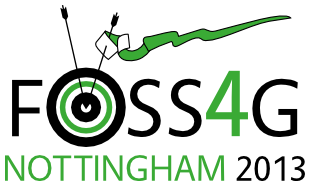Presentation
OS Geospatial Technologies + Science Data For Evidence-Based Decision Making
David Medyckyj-Scott (Landcare Research Ltd, New Zealand) with Nick Spencer (Landcare Research Ltd, New Zealand), Robert Gibb (Landcare Research Ltd, New Zealand)
09:30 on Saturday 21st September (in Session 47, starting at 9 a.m., Banqueting Suite)
Show in Timetable
In many countries there is increasing pressure for government and business to base decisions on scientific evidence. The need to do this has become more apparent as issues have become more complex, non-liner, dynamic and under greater scrutiny by businesses and the public alike. Using a scientific approach to investigate all available evidence can lead to business and policy decisions that are more effective in achieving desired outcomes as decisions are based on accurate and meaningful information rather than anecdote, dogma and belief. This leads to better outcomes for a business, the community or a country. Statistics are a vital source of evidence as they provide us with clear, objective, numerical data on important aspects of life, assisting and encouraging informed understanding of the issues, discussions, the levels of uncertainty involved, decision making, and then evaluation of the success of the decision. However, experience suggests that statistical data is not as frequent an input to a decision process as suggested by the popular press. This is particularly the case in policy making by governments. Reasons for this include a lack of awareness of what data exist, the lack of data fit for purpose or with sufficient quality for decision making, barriers to accessing the data and difficulties in using the data. It is also often the case that decision makers don’t want to do the ‘heavy lifting’ of getting and processing the data so that they can analyse and interpret it. They may also lack an understanding of the data to be able to do this and would rather have access to tools that provide scientific interpretations of the data for them. Open source geospatial software provides science organisations with a cost effective way to efficiently provide access to scientific data and tools. In our presentation we will describe how Landcare Research, a Crown-owned company that carries out environmental research for the benefit of New Zealand, has been using open source geospatial software and open standards to provide access to data and tools to support decision making by industry, central and local government and Māori. Landcare Research is one of eight Crown research institutes (CRIs) formed in 1992. Our Core Purpose is to drive innovation in New Zealand’s management of terrestrial biodiversity and land resources in order to both protect and enhance the terrestrial environment and grow New Zealand’s prosperity. Landcare Research does this through the provision of research and the transfer of technology and knowledge. Landcare Research is also the custodian of a number of nationally significant databases and collections all of which have varying levels of spatial information within them. Examples include the National Land Resource Inventory, the National Soils Database, the National Vegetation Survey Databank, the New Zealand Arthropod Collection (NZAC), and the New Zealand Fungal and Plant Disease Collection (PDD). Landcare Research engaged early in web delivery of geospatial data, launching the first environmental GIS on the web in 1995 and has developed and operated a number of on-line geospatial tools in the intervening period based, in the main, on proprietary software. While Landcare Research has been working with large science datasets for 10+ years, over the last three years Landcare Research has invested heavily in data management and processing infrastructure, in developing web based applications and tools, and B2B and B2C web services. In some cases this has been in partnership with other companies but increasingly the work has been done by a team of developers based in the Informatics team at Landcare Research using open source geospatial tools and libraries including Postgres/PostGIS, MapServer, MapCache, MapFish, OpenLayers, GDAL, etc. We now provide a number of external and internal science data based mapping portals to support decision makers, e.g. Our Environment (http://ourenvironment.scinfo.org.nz), which are underpinned by a map, data and processing web services infrastructure. This same services infrastructure is used to quickly and cost effectively to deploy new geospatial applications and integrate maps and spatial data into other types of web browser delivered science applications. Landcare Research has also deployed a variety of public OGC compliant web services. One of the advantages of using open source geospatial software is that we can extend the software ourselves (and contribute this back to the open source open source geospatial software community) and are doing so in innovative ways e.g. video WMS or WMS-V. Or we can work with others in the community to extend it on our behalf e.g. support for BerkeleyDB cache back-end stores in Mapcache. We will demonstrate some of these during the presentation. The conclusion we have drawn is that open source geospatial software brings us many benefits that we wouldn’t obtain from using proprietary GIS software. There are some downsides, but these are outweighed by the advantages. These include flexibility, extensibility, direct communication between our developers and other developers, cost savings (licences particularly with respect to scalability), that as an organisation at the leading edge of science and transfer of knowledge we need. We can’t yet prove that providing a science based evidence base is resulting in better decision making, not least because such data is only one dimension of decision making, but we can show that it is possible to cost effectively lower the barriers to gaining access to such data in meaningful ways.
